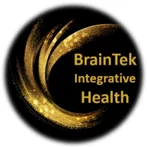
CHANGED LIVES - IZAIAH




Baby Izaiah was run over by a drunk driver as his Grandfather was pushing him in a stroller on the sidewalk as he was taking Iziah to the park. The drunk driver was going at a high rate of speed leaving the park and ran over Baby Izaiah.as he was on the sidewalk. Notice the SUV that hit him, witnesses told me the driver kept going until he ran into a nearby building then took off running. Witnesses caught the driver and held him until the Police arrived. Notice the flat stroller Izaiah was in. Upon impact, he flew out of the stroller, and went head first into a stop sign, knocking the stop sign over. Almost 300 days in the hospital, he was sent home for hospice.
I was honored to work with him threre days after he was home. You can see how I received him in the picture above, blind, paralyzed the first thing I did was to have some alone time with the baby. Of course, he couldn’t talk with him mouth taped, and movement was so minuscule, I couldn’t help but cry and pray before I started to work. I held his arm and hand and said; Izaiah, this is Dennis. I am here to help you. There is nothing you and I cannot achieve working together. That was the beginning of a great relationship. I will never forget, as I was working with some gentle massage and protocol, he got his sight back that night. I still remember his mother and grandmother screaming he can see! He can see! He got to watch Finding Nemo that night with me and his family. He was featured on the Dr. Phill Show two times and on news throughout Southern California, Mexico and several other channels,
I called in a Chiropractor friend who got his legs to move. You can see him standing up in the middle photo second row. That’s me working with him in the third picture second row.
BABY IZAIAH PRESS CONFORANCE
The recorded response noted that the respiratory volume raised from 91 to 100 within 15-20 seconds.
Several emotional “restrictions” were uncovered through this process, indicating to us that Izaiah felt that this felt “right.” This shows on the software, as noted in Slide 5.
A second emotion revealed that the resistance layered in his Nervous System indicates emotional signals that indicate death or comatose signals from the markers. That is an inherent bodily behavior. In times of great emotional trauma, our bodies were designed to pass out or go comatose so we don’t have to see or consciously experience the pain and suffering.
This emotion “locked up” the base of the skull / Occiput. I sent signals to O1, O2, and O3. When we addressed that area, Izaiah stunned all in the room by voluntarily raising his pelvis off the bed, and subsequently extending both legs individually, as if to finally be able to stretch out his body.
This was a very emotional, joyful, yet happy, tearful occurrence for the family to see voluntary movement for the first time since the accident.
We finished the session by addressing the xiphoid at the tip of the sternum, which relaxed his rib cage and increased his breath rate and capacity.
He subsequently began to fill his lungs deeper and outpaced the rate of the ventilator.
The final note of the evening was being able to elicit a + Babinski reflex Right/Left in the feet.
Babinski’s reflex occurs when the big toe moves toward the top of the foot and the other toes fan out after the sole of the foot has been firmly stroked.
Attached is our business cards. We welcome your calls and questions.
XXX




